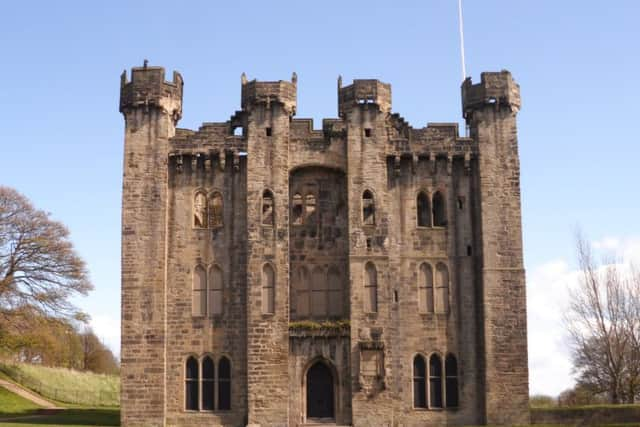Why the Stadium of Light is a winner in Sunderland's history


The aim is to give the city’s architecture the limelight it deserves.
Chris Cordner reports.


Sunderland’s “unfairly neglected” architectural treasures have been examined in a new book.
Advertisement
Hide AdAdvertisement
Hide AdSunderland in 50 Buildings explores the history of the city by analysing a selection of its finest buildings.
Architectural historian Dr Michael Johnson is the author who guides the reader on a tour of the city’s historic buildings and modern architectural marvels.
The churches, theatres and pubs of Sunderland’s industrial heyday are examined alongside the innovative buildings of a 21st century city.


Informative entries are arranged chronologically to tell the story of Sunderland’s development through its most significant buildings.
Advertisement
Hide AdAdvertisement
Hide AdAnd a specially designed map appears at the beginning of the volume to show where each building is located.
Michael is a Lecturer in Design History at Northumbria University.
He said: “Sunderland has been overshadowed by Newcastle and doesn’t have a high reputation for architecture.
“However, the city does have many buildings of architectural interest, as well as local curiosities and hidden gems. I hope the book will help to increase our appreciation of Sunderland’s extraordinary heritage and prove that the city has much to be proud of.”
Advertisement
Hide AdAdvertisement
Hide AdThe most pressing factor in Sunderland’s development was the need to provide accommodation for the increasing city population.
Michael explained how the middle classes moved to elegant classical terraces on the Fawcett estate until commercial development undermined its exclusivity.
After that, distinguished villas and Italian-style terraces were built on the Mowbray estate as well as in the leafy suburb of Ashbrooke.
Andindustrial growth brought with it the growth of banks which were built on Fawcett Street, which emerged as the town’s major financial axis.
Advertisement
Hide AdAdvertisement
Hide AdSome of these were designed by important national practitioners and introduced the latest architectural styles to Sunderland.
The expanding urban community needed churches and chapels in which to worship, and many of Sunderland’s finest buildings lie within the field of ecclesiastical architecture, said Michael.
They included Holy Trinity which is a well-preserved example of a Georgian church, the book points out.
Michael told how Christ Church and St John’s, Ashbrooke, represented the pinnacle of Sunderland’s achievements in Gothic architecture, while St Andrew’s at Roker is a masterpiece of the Arts and Crafts movement.
Advertisement
Hide AdAdvertisement
Hide AdA century of steady development culminated in the Edwardian period, when Sunderland was crowned with public and commercial buildings in the Baroque style, sometimes revealing the influence of continental Art Nouveau.
After the Second World War, Sunderland experienced a period of decline that saw the closure of traditional industries.
The central shopping area was completely remodelled and older housing was replaced by modern council estates and tower blocks.
Sunderland won city status in 1992 and its subsequent development has been powered by efforts to envisage a new post-industrial future.
Advertisement
Hide AdAdvertisement
Hide AdThe turn of the millennium has brought with it a programme of regeneration.
Ambitious projects and high-tech industries have transformed derelict industrial sites into exciting new ventures.
Michael added: “Despite all of these achievements, I feel that Sunderland architecture has been unfairly neglected.
“I hope that this book will generate interest in Sunderland’s heritage and help to preserve these buildings for the future.”
Sunderland in 50 Buildings is published by Amberley and is available for £14.99.